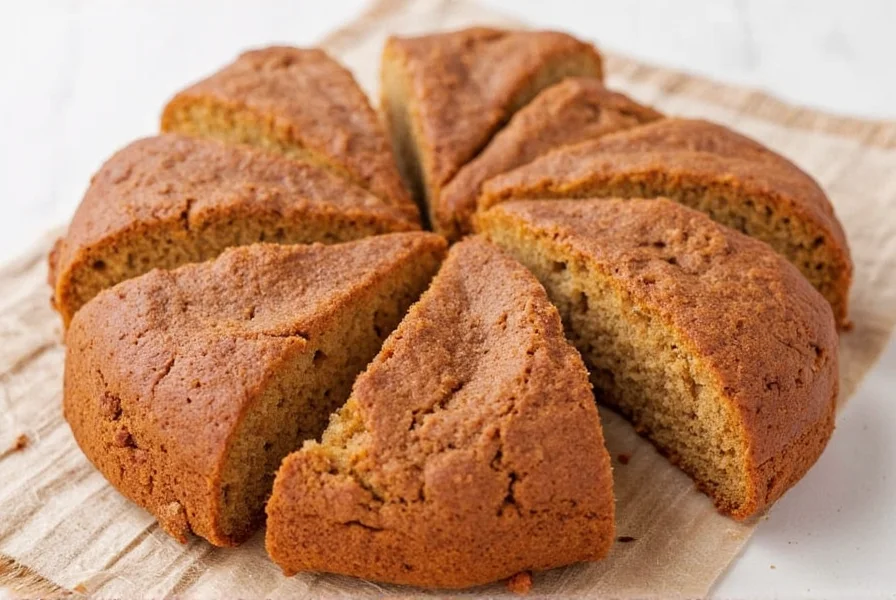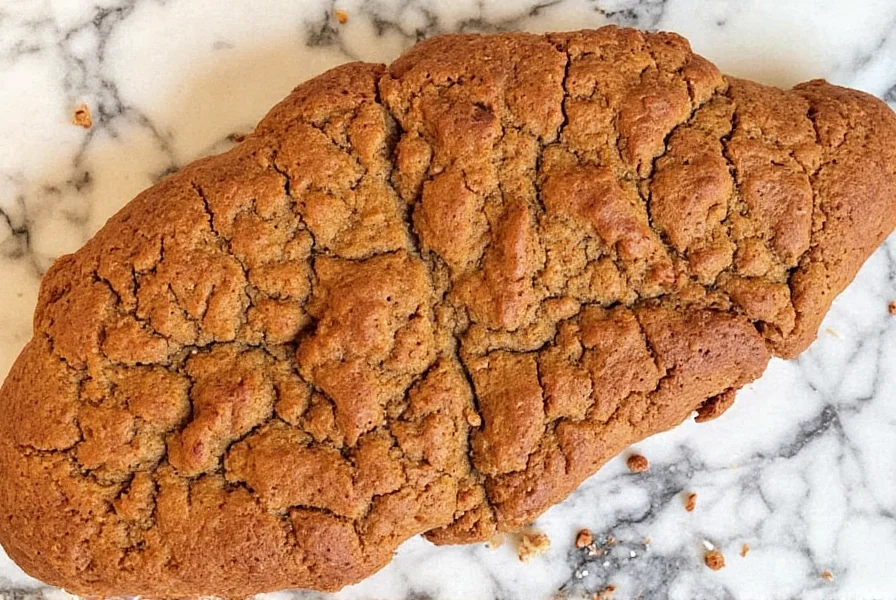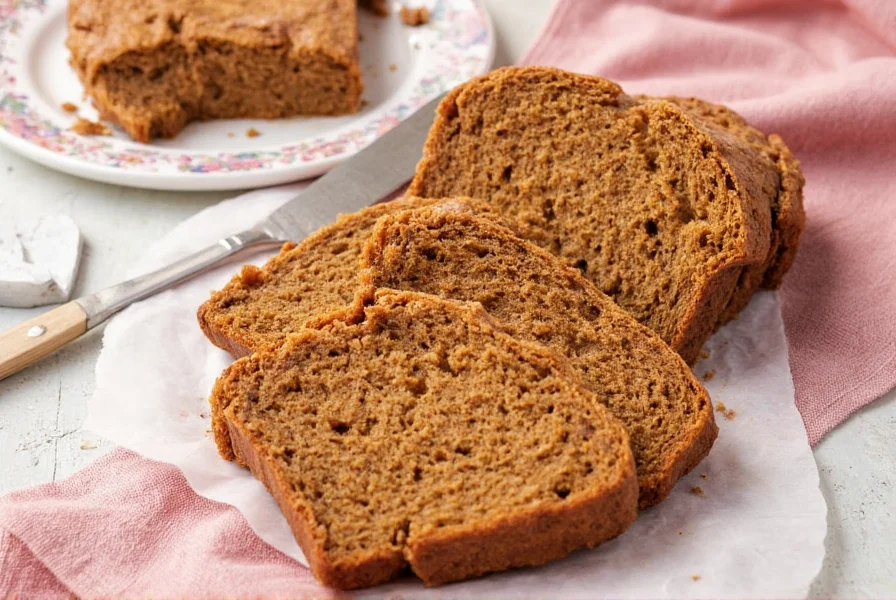The Science Behind Perfect Ginger Bread
Creating exceptional ginger bread isn't just about following steps—it's understanding why each ingredient matters. Traditional ginger bread relies on the chemical reaction between baking soda and acidic molasses, which creates that distinctive rise and tender texture. The hot water in this recipe serves a dual purpose: it thins the batter for even mixing while activating the baking soda immediately, preventing a metallic aftertaste that can occur when baking soda sits too long before baking.
Ingredient Breakdown: Why Quality Matters
Not all ingredients perform equally in this easy ginger bread recipe for beginners. Let's examine each component:
| Ingredient | Why It Matters | Substitution Notes |
|---|---|---|
| Dark molasses | Provides deep flavor and activates baking soda | Light molasses works but yields milder flavor |
| Freshly ground ginger | More potent than pre-ground with brighter flavor | Pre-ground works but use 20% more |
| Room temperature egg | Emulsifies ingredients for even texture | Cold egg can cause batter to curdle |
Step-by-Step Baking Instructions
Follow these precise steps for moist ginger bread cake recipe success:
- Preheat oven to 350°F (175°C) and grease an 8x4 inch loaf pan
- Whisk dry ingredients: flour, baking soda, ginger, cinnamon, cloves, and salt
- In separate bowl, combine molasses, brown sugar, oil, and egg until smooth
- Gradually add dry ingredients to wet, mixing until just incorporated
- Slowly pour in hot water while stirring to create smooth batter
- Pour batter into prepared pan and smooth top
- Bake 35-40 minutes until toothpick inserted comes out clean
- Cool in pan 10 minutes, then transfer to wire rack

Pro Tips for Ginger Bread Success
Avoid common pitfalls with these professional techniques for your traditional molasses ginger bread:
- Don't overmix—stir batter just until ingredients combine to prevent tough texture
- Check oven temperature with independent thermometer; inaccurate ovens cause dry ginger bread
- Cool properly—leaving bread in pan too long traps steam and creates soggy bottom
- Test for doneness at 35 minutes; insert toothpick near center (not touching pan)
Storage and Serving Recommendations
For optimal flavor development, wrap cooled ginger bread in parchment paper, then foil, and let rest overnight before slicing. Properly stored at room temperature, it stays moist for 4-5 days. For longer preservation, freeze slices individually wrapped for up to 3 months. Serve with whipped cream or vanilla ice cream for dessert, or enjoy plain with morning coffee for a comforting breakfast.

Popular Recipe Variations
Adapt this base recipe for different preferences:
- Gluten-free version: Substitute 1:1 gluten-free flour blend and add ½ tsp xanthan gum
- Spice-intensified: Add ¼ tsp black pepper and 2 tbsp freshly grated ginger
- Citrus twist: Incorporate 1 tbsp orange zest for bright flavor contrast
- Sticky toffee variation: Top with date caramel sauce before serving
Troubleshooting Common Issues
When making ginger bread from scratch, these problems often occur:
- Dry texture: Usually from overbaking or inaccurate flour measurement. Use spoon-and-level method for flour.
- Sunken center: Caused by underbaking or opening oven too early. Maintain consistent temperature.
- Bitter aftertaste: Indicates baking soda wasn't properly activated. Ensure molasses is fresh and acidic.
- Too spicy: Reduce ginger by ¼ tsp and increase cinnamon for milder flavor profile.
Frequently Asked Questions
Why does my ginger bread turn out dry?
Dry ginger bread typically results from overbaking, inaccurate flour measurement, or insufficient moisture ingredients. Always use the spoon-and-level method for flour (don't scoop directly from bag), check for doneness at minimum baking time, and ensure you're using dark molasses which contains more moisture than light varieties. The hot water in this recipe is crucial—it creates steam during baking that keeps the crumb tender.
Can I make ginger bread without molasses?
While molasses provides ginger bread's signature flavor, you can substitute with ⅓ cup maple syrup plus 1 tbsp blackstrap molasses for depth. The flavor profile will differ significantly—traditional ginger bread relies on molasses' complex bitterness to balance the spices. For best results with this best ginger bread recipe, use dark molasses as specified.
How do I know when ginger bread is fully baked?
Insert a toothpick into the center of the loaf—it should come out with moist crumbs but no wet batter. The edges will pull slightly away from the pan, and the top will spring back when lightly pressed. For accurate ginger bread baking temperature assessment, use an instant-read thermometer; the internal temperature should register 200-205°F (93-96°C) when properly baked.
Why did my ginger bread collapse after baking?
Collapse usually occurs from opening the oven door too early (before 30 minutes), underbaking, or excessive leavening. This easy ginger bread recipe for beginners uses precise baking soda measurements—don't substitute with baking powder. Allow the structure to set by avoiding temperature fluctuations during baking. Cooling in the pan for exactly 10 minutes provides necessary support as the crumb sets.
Can I prepare ginger bread batter ahead of time?
For optimal rise and texture, bake ginger bread immediately after mixing. The chemical reaction between baking soda and molasses begins instantly. If you must prepare ahead, separate dry and wet ingredients, refrigerate separately, and combine no more than 15 minutes before baking. Never let fully mixed batter sit—the traditional molasses ginger bread recipe relies on immediate baking for proper aeration.











 浙公网安备
33010002000092号
浙公网安备
33010002000092号 浙B2-20120091-4
浙B2-20120091-4